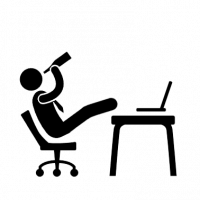Hub bearing race and freewheel woes.
I wanted to fix up an old Pashley bike with rod brakes that I came across. The back wheel was rotating at an angle so I took the axle out to find 8 bearings on one side and only 6 on the freewheel side!! Instead of a simple clean and fit new bearings, the hub cup on FW side had this weird protrusion of what I can only describe as rock solid metallic like gunk! What on earth is this? 
Looking at the other 180° of the race appears normal just filthy but I wanted to remove the freewheel to inspect further... however one of the removal tool notches is already sheared off as shown and some bright spark has then turned to the locking but instead of tapping it clockwise to undo, they must have tightened it further from the looks of one of those lockring holes!!
Depsite my best efforts with a hammer and punch, the lockring will not turn so I have no idea how to remove this FW either!
1. How do I get the FW off? (I don't have any grinding tools)
2. Any idea what that substance in the bearing cup is?

Looking at the other 180° of the race appears normal just filthy but I wanted to remove the freewheel to inspect further... however one of the removal tool notches is already sheared off as shown and some bright spark has then turned to the locking but instead of tapping it clockwise to undo, they must have tightened it further from the looks of one of those lockring holes!!

Depsite my best efforts with a hammer and punch, the lockring will not turn so I have no idea how to remove this FW either!
1. How do I get the FW off? (I don't have any grinding tools)
2. Any idea what that substance in the bearing cup is?
0
Comments
-
Why clockwise? You undo a freewheel anticlockwise, it's just a normal thread it is mounted on.
left the forum March 20230 -
Ugo is correct. it looks like you need to use a "C' spanner engaged in the undamaged notch. Mid you I don't know the scale. Maybe use just need to replace the spindle and use a two prong freewheel extractor (which used to come in several sizes.
Sheldon Brown may give you some more clues, but I think this freewheel is from before his time.0 -
I said the lockring not the freewheel itself. How can I take the whole FW off when the notch has sheared off?0
-
How would a C spanner or FW extractor tool work when only one notch remains intact? This is why I tried to use the lockring holes instead hoping to take it apart and destroy it in stages but even that is impossible to budge however hard I hammer using a punchjanusz0 said:Ugo is correct. it looks like you need to use a "C' spanner engaged in the undamaged notch. Mid you I don't know the scale. Maybe use just need to replace the spindle and use a two prong freewheel extractor (which used to come in several sizes.
Sheldon Brown may give you some more clues, but I think this freewheel is from before his time. I've taken many lockrings off freewheels before but this time it seems impossible.
I've taken many lockrings off freewheels before but this time it seems impossible.
0 -
Normally you have a lockring for a fixed wheel sprocket, but equally you don't have a lockring for a freewheel. The freewhel is a screw on thing which unscrews anticlockwise.
I wonder if it's possible with a Dremel to make another two notches... alternatively, build a new wheel, looks like that hub has seen better dayleft the forum March 20230 -
I think the op is looking to refurbish an old pashley and wanting to restore rather than replace where possible.ugo.santalucia said:Normally you have a lockring for a fixed wheel sprocket, but equally you don't have a lockring for a freewheel. The freewhel is a screw on thing which unscrews anticlockwise.
I wonder if it's possible with a Dremel to make another two notches... alternatively, build a new wheel, looks like that hub has seen better day
OP possibly drill two holes in the top of the freewheel, hammer in pins, clamp up the pins in a vice and turn using the wheel for extra leverage. It will either come off OR will get torn apart and come off. Either way it will be off.
Also Ugo is also right, there isn't much point using a knackered hub, buy a new old one off the bay and rebuild (assuming the rim is good etc etc)
Nice project btw.0 -
Use a blowlamp and get some heat into the threads. One good belt with a hammer and chisel should start it moving [anticlockwise]1



